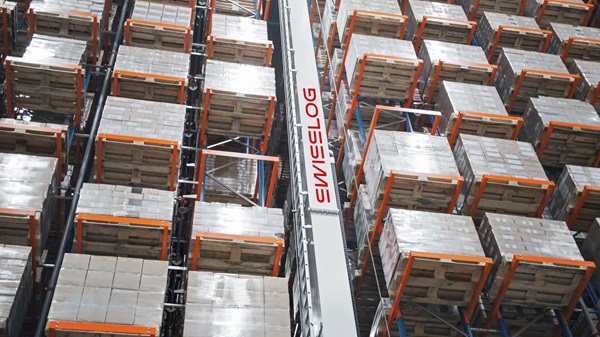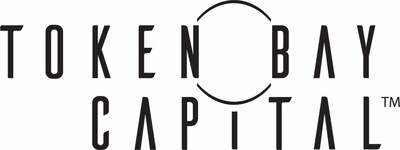News
Salesforce Announces Record First Quarter Fiscal 2021 Results
Published
4 years agoon


Salesforce (NYSE: CRM), the global leader in CRM, today announced results for its fiscal first quarter ended April 30, 2020.
“Our results, amidst this global crisis, demonstrated our ability to execute at speed, innovate at scale and the strength of our business model,” said Marc Benioff, Chair & CEO, Salesforce. “We made long-term investments in keeping our employees safe, supporting our customers, delivering crucial innovation like Work.com, and helping our communities with PPE, grants, and technology. The pandemic showed us that digital is an imperative for every company, and we’re confident Salesforce will continue to accelerate as we bring our customers into the new normal.”
In response to COVID-19, Salesforce took the following actions in its fiscal first quarter to invest in its customers, employees and community during this unprecedented time, and to prepare for the future:
- Launched Salesforce Care, a set of free rapid response solutions to help companies stay connected to their employees, customers and partners during the COVID-19 crisis
- Created the Tableau Data Hub, a free resource to help companies and governments around the world see and understand data about the pandemic
- Developed an online leadership program called Leading Through Change. The program highlights the work Salesforce customers have been doing during the crisis and has over 75 million views to date
- Provided customers most affected by the COVID-19 pandemic temporary financial flexibility
- Gave certainty to its sales team with a one-time guaranteed commission for the first quarter
- Directed its global workforce to work from home and cancelled all business travel by employees for the foreseeable future
- Committed to no significant layoffs for the first 90 days of the crisis
- Launched B-Well Together for employees, a series focused on aligning the mind and body with leading well-being experts. Based on global demand, the company opened it to the public
- Shifted customer, industry, and employee events to virtual-only experiences for the remainder of 2020
- Donated more than $7.5M in grants to organizations on the front lines of the crisis in the San Francisco Bay Area, New York, Israel, Italy, Spain, France and Germany
- Sourced more than 50 million units of PPE, such as masks, gowns, suits, and face shields for hospitals in the US, U.K., India and France
Salesforce continues to invest in its stakeholders. In the second fiscal quarter, the company introduced Work.com, new technology solutions and resources to help business and community leaders around the world reopen safely, re-skill employees and respond efficiently on the heels of the COVID-19 pandemic. Work.com has generated enormous interest from businesses and governments and deepened partnerships with the world’s top system integrators and technology partners. For example, Workday recently announced that it will integrate its employee data directly into Work.com to make it easier for employers to centralize critical data and get their businesses up and running again.
Salesforce delivered the following results for its fiscal first quarter:
Revenue:
Total first quarter revenue was $4.87 billion, an increase of 30% year-over-year, and 31% in constant currency. Subscription and support revenues for the quarter were $4.58 billion, an increase of 31% year-over-year. Professional services and other revenues for the quarter were $290 million, an increase of 20% year-over-year.
Earnings per Share:
First quarter GAAP earnings per share was $0.11, and non-GAAP diluted earnings per share was $0.70. Mark-to-market accounting of the company’s strategic investments, required by ASU 2016-01, benefited GAAP earnings per share by $0.16 based on a U.S. tax rate of 25% and non-GAAP diluted earnings per share by $0.16 based on a non-GAAP tax rate of 22%.
Cash: Cash generated from operations for the first quarter was $1.86 billion, a decrease of 5% year-over-year. Total cash, cash equivalents and marketable securities ended the first quarter at $9.80 billion.
Remaining Performance Obligation: Remaining performance obligation ended the first quarter at approximately $29.3 billion, an increase of 18% year-over-year. Current remaining performance obligation ended the first quarter at approximately $14.5 billion, an increase of 23% year-over-year, 24% in constant currency.
As of May 28, 2020, the company is initiating its revenue guidance, GAAP earnings per share guidance, non-GAAP earnings per share guidance, and current remaining performance obligation growth guidance for the its second quarter of fiscal year 2021. As a result of the first quarter financial impacts of COVID-19 discussed above, and the company’s current assumptions related to the extent to which the pandemic will affect the business going forward, the company is lowering its revenue guidance, GAAP earnings per share guidance, non-GAAP earnings per share guidance, and operating cash flow guidance previously provided on February 25, 2020 for its full fiscal year 2021. Management will provide further commentary around these guidance assumptions on its earnings call, which is expected to occur on May 28, 2020 at 2:00 PM Pacific Time.
Our guidance assumes no change to the value of the company’s strategic investment portfolio resulting from ASU 2016-01 as it is not possible to forecast future gains and losses. In addition, the guidance below is based on estimated GAAP tax rates that reflect the company’s currently available information, and excludes forecasted discrete tax items such as excess tax benefits from stock-based compensation. The GAAP tax rates may fluctuate due to future acquisitions or other transactions.
|
Q2 FY21 |
Full Year FY21 |
||||||
|
Revenue |
$4.89 – $4.90 billion |
~$20.0 billion |
|||||
|
Y/Y Growth |
22% – 23% |
~17% |
|||||
|
GAAP earnings per share |
($0.02) – ($0.01) |
($0.06) – ($0.04) |
|||||
|
Non-GAAP earnings per share |
$0.66 – $0.67 |
$2.93 – $2.95 |
|||||
|
Operating Cash Flow Growth (Y/Y) |
N/A |
~10% – 11% |
|||||
|
Current Remaining Performance Obligation Growth (Y/Y) |
~16% – 17% |
N/A |
|||||
|
The following is a per share reconciliation of GAAP diluted loss per share to non-GAAP diluted earnings per share guidance for the next quarter and the full year: |
|||||||
|
Fiscal 2021 |
|||||||
|
Q2 |
FY21 |
||||||
|
GAAP loss per share range(1)(2) |
($0.02) – ($0.01) |
($0.06) – ($0.04) |
|||||
|
Plus |
|||||||
|
Amortization of purchased intangibles |
$ |
0.31 |
$ |
1.21 |
|||
|
Stock-based expense |
$ |
0.62 |
$ |
2.36 |
|||
|
Income tax effects and adjustments(3) |
$ |
(0.25) |
$ |
(0.58) |
|||
|
Non-GAAP diluted earnings per share(2) |
$0.66 – $0.67 |
$2.93 – $2.95 |
|||||
|
Shares used in computing basic GAAP net loss per share (millions) |
903 |
906 |
|||||
|
Shares used in computing diluted Non-GAAP net income per share (millions) |
924 |
927 |
|||||
(1) The Company’s GAAP tax provision is expected to be approximately 81% for the three months ended July 31, 2020, and approximately 104% for the year ended January 31, 2021. The GAAP tax rates may fluctuate due to discrete tax items and related effects in conjunction with certain provisions in the Tax Cuts and Jobs Act, future acquisitions or other transactions.
(2) The Company’s projected GAAP and Non-GAAP basic and diluted earnings per share assumes no change to the value of our strategic investment portfolio resulting from ASU 2016-01 as it is not possible to forecast future gains and losses. While historically the company’s strategic investment portfolio has had a positive impact on the company’s financial results, that may not be true for future periods, particularly in periods of significant market fluctuations that affect the publicly traded companies within the company’s strategic investment portfolio. The impact of future gains or losses from the company’s strategic investment portfolio could be material.
(3) The Company’s Non-GAAP tax provision uses a long-term projected tax rate of 22.0%, which reflects currently available information and could be subject to change.
For additional information regarding non-GAAP financial measures see the reconciliation of results and related explanations below.
Quarterly Conference Call
Salesforce will host a conference call at 2:00 p.m. (PT) / 5:00 p.m. (ET) to discuss its financial results with the investment community. A live webcast of the event will be available on the Salesforce Investor Relations website at www.salesforce.com/investor. A live dial-in is available domestically at (833) 579-0905 and internationally at (778) 560-2800, Conference ID 6520138. A replay will be available at (800) 585-8367 or (416) 621-4642 until midnight (ET) June 11, 2020.
About Salesforce
Salesforce is the global leader in Customer Relationship Management (CRM), bringing companies closer to their customers in the digital age. Founded in 1999, Salesforce enables companies of every size and industry to take advantage of powerful technologies—cloud, mobile, social, internet of things, artificial intelligence, voice and blockchain—to create a 360-degree view of their customers. For more information about Salesforce (NYSE: CRM), visit: www.salesforce.com.
“Safe harbor” statement under the Private Securities Litigation Reform Act of 1995: This press release contains forward-looking statements about the company’s financial and operating results, which may include expected GAAP and non-GAAP financial and other operating and non-operating results, including revenue, net income, earnings per share, operating cash flow growth, operating margin improvement, expected revenue growth, expected current remaining performance obligation growth, expected tax rates, stock-based compensation expenses, amortization of purchased intangibles, shares outstanding, market growth, environmental, social and governance goals, expected capital allocation, including mergers and acquisitions, capital expenditures and other investments, expectations regarding closing contemplated acquisitions and contributions from acquired companies. The achievement or success of the matters covered by such forward-looking statements involves risks, uncertainties and assumptions. If any such risks or uncertainties materialize or if any of the assumptions prove incorrect, the company’s results could differ materially from the results expressed or implied by the forward-looking statements it makes.
The risks and uncertainties referred to above include — but are not limited to — risks associated with the effect of the impact of the COVID-19 pandemic, related public health measures and resulting economic downturn and market volatility; our ability to maintain service performance and security levels meeting the expectations of our customers, and the resources and costs required to avoid unanticipated downtime and prevent, detect and remediate performance degradation and security breaches; the expenses associated with our data centers and third-party infrastructure providers; our ability to secure and costs related to additional data center capacity; our reliance on third-party hardware, software and platform providers; the effect of evolving domestic and foreign government regulations, including those related to the provision of services on the Internet, those related to accessing the Internet, and those addressing data privacy, cross-border data transfers and import and export controls; current and potential litigation involving us or our industry, including litigation involving acquired entities such as Tableau, and the resolution or settlement thereof; regulatory developments and regulatory investigations involving us or affecting our industry; our ability to successfully introduce new services and product features, including any efforts to expand our services beyond the CRM market; the success of our strategy of acquiring or making investments in complementary businesses, joint ventures, services, technologies and intellectual property rights; our ability to realize the benefits from strategic partnerships, joint ventures and investments; our ability to successfully integrate acquired businesses and technologies; our ability to compete in the market in which we participate; the success of our business strategy and our plan to build our business, including our strategy to be the leading provider of enterprise cloud computing applications and platforms; our ability to execute our business plans; our ability to continue to grow unearned revenue and remaining performance obligation; the pace of change and innovation in enterprise cloud computing services; the seasonal nature of our sales cycles; our ability to limit customer attrition and costs related to those efforts; the success of our international expansion strategy; the demands on our personnel and infrastructure resulting from significant growth in our customer base and operations, including as a result of acquisitions; our dependency on the development and maintenance of the infrastructure of the Internet; our real estate and office facilities strategy and related costs and uncertainties; fluctuations in, and our ability to predict, our operating results and cash flows; the variability in our results arising from the accounting for term license revenue products; the performance and fair value of our investments in complementary businesses through our strategic investment portfolio; the impact of future gains or losses from our strategic investment portfolio including gains or losses from overall market conditions that may affect the publicly traded companies within our strategic investment portfolio; our ability to protect our intellectual property rights; our ability to develop our brands; the impact of foreign currency exchange rate and interest rate fluctuations on our results; the valuation of our deferred tax assets and the release of related valuation allowances; the potential availability of additional tax assets in the future; the impact of new accounting pronouncements and tax laws; uncertainties affecting our ability to estimate our tax rate; uncertainties regarding our tax obligations in connection with potential jurisdictional transfers of intellectual property, including the tax rate, the timing of the transfer and the value of such transferred intellectual property; uncertainties regarding the effect of general economic and market conditions; the impact of geopolitical events; uncertainties regarding the impact of expensing stock options and other equity awards; the sufficiency of our capital resources; risks related to our 2023 and 2028 senior notes, revolving credit facility and loan associated with 50 Fremont; our ability to comply with our debt covenants and lease obligations; and the impact of climate change, natural disasters and actual or threatened public health emergencies, including the ongoing COVID-19 pandemic.
Further information on these and other factors that could affect the company’s financial results is included in the reports on Forms 10-K, 10-Q and 8-K and in other filings it makes with the Securities and Exchange Commission from time to time. These documents are available on the SEC Filings section of the Investor Information section of the company’s website at www.salesforce.com/investor.
Salesforce.com, inc. assumes no obligation and does not intend to update these forward-looking statements, except as required by law.
© 2020 salesforce.com, inc. All rights reserved. Salesforce and other marks are trademarks of salesforce.com, inc. Other brands featured herein may be trademarks of their respective owners.
|
salesforce.com, inc. |
|||||||
|
Consolidated Statements of Operations |
|||||||
|
(in millions, except per share data) |
|||||||
|
(Unaudited) |
|||||||
|
Three Months Ended April 30, |
|||||||
|
2020 |
2019 |
||||||
|
Revenues: |
|||||||
|
Subscription and support |
$ |
4,575 |
$ |
3,496 |
|||
|
Professional services and other |
290 |
241 |
|||||
|
Total revenues |
4,865 |
3,737 |
|||||
|
Cost of revenues (1)(2): |
|||||||
|
Subscription and support |
966 |
678 |
|||||
|
Professional services and other |
288 |
236 |
|||||
|
Total cost of revenues |
1,254 |
914 |
|||||
|
Gross profit |
3,611 |
2,823 |
|||||
|
Operating expenses (1)(2): |
|||||||
|
Research and development |
859 |
554 |
|||||
|
Marketing and sales |
2,390 |
1,697 |
|||||
|
General and administrative |
502 |
362 |
|||||
|
Total operating expenses |
3,751 |
2,613 |
|||||
|
Income (loss) from operations |
(140) |
210 |
|||||
|
Gains on strategic investments, net |
192 |
281 |
|||||
|
Other expense |
(5) |
(9) |
|||||
|
Income before benefit from (provision for) income taxes |
47 |
482 |
|||||
|
Benefit from (provision for) income taxes |
52 |
(90) |
|||||
|
Net income |
$ |
99 |
$ |
392 |
|||
|
Basic net income per share |
$ |
0.11 |
$ |
0.51 |
|||
|
Diluted net income per share |
$ |
0.11 |
$ |
0.49 |
|||
|
Shares used in computing basic net income per share |
896 |
771 |
|||||
|
Shares used in computing diluted net income per share |
913 |
793 |
|||||
|
(1) Amounts include amortization of intangible assets acquired through business combinations, as follows: |
|||||||
|
Three Months Ended April 30, |
|||||||
|
2020 |
2019 |
||||||
|
Cost of revenues |
$ |
159 |
$ |
61 |
|||
|
Marketing and sales |
112 |
68 |
|||||
|
(2) Amounts include stock-based expense, as follows: |
|||||||
|
Three Months Ended April 30, |
|||||||
|
2020 |
2019 |
||||||
|
Cost of revenues |
$ |
52 |
$ |
43 |
|||
|
Research and development |
166 |
81 |
|||||
|
Marketing and sales |
223 |
177 |
|||||
|
General and administrative |
63 |
42 |
|||||
|
salesforce.com, inc. |
|||||
|
Consolidated Statements of Operations |
|||||
|
(As a percentage of total revenues) |
|||||
|
(Unaudited) |
|||||
|
Three Months Ended April 30, |
|||||
|
2020 |
2019 |
||||
|
Revenues: |
|||||
|
Subscription and support |
94 |
% |
94 |
% |
|
|
Professional services and other |
6 |
6 |
|||
|
Total revenues |
100 |
100 |
|||
|
Cost of revenues (1)(2): |
|||||
|
Subscription and support |
20 |
18 |
|||
|
Professional services and other |
6 |
6 |
|||
|
Total cost of revenues |
26 |
24 |
|||
|
Gross profit |
74 |
76 |
|||
|
Operating expenses (1)(2): |
|||||
|
Research and development |
18 |
15 |
|||
|
Marketing and sales |
49 |
45 |
|||
|
General and administrative |
10 |
10 |
|||
|
Total operating expenses |
77 |
70 |
|||
|
Income (loss) from operations |
(3) |
6 |
|||
|
Gains on strategic investments, net |
4 |
7 |
|||
|
Other expense |
0 |
0 |
|||
|
Income before benefit from (provision for) income taxes |
1 |
13 |
|||
|
Benefit from (provision for) income taxes |
1 |
(3) |
|||
|
Net income |
2 |
% |
10 |
% |
|
|
(1) Amounts include amortization of intangible assets acquired through business combinations as a percentage of total revenues, as follows: |
|||||
|
Three Months Ended April 30, |
|||||
|
2020 |
2019 |
||||
|
Cost of revenues |
3 |
% |
2 |
% |
|
|
Marketing and sales |
2 |
2 |
|||
|
(2) Amounts include stock-based expense as a percentage of total revenues, as follows: |
|||||
|
Three Months Ended April 30, |
|||||
|
2020 |
2019 |
||||
|
Cost of revenues |
1 |
% |
1 |
% |
|
|
Research and development |
3 |
2 |
|||
|
Marketing and sales |
5 |
5 |
|||
|
General and administrative |
1 |
1 |
|||
|
salesforce.com, inc. |
|||||||
|
Consolidated Balance Sheets |
|||||||
|
(in millions) |
|||||||
|
(Unaudited) |
|||||||
|
April 30, 2020 |
January 31, 2020 |
||||||
|
Assets |
|||||||
|
Current assets: |
|||||||
|
Cash and cash equivalents |
$ |
5,772 |
$ |
4,145 |
|||
|
Marketable securities |
4,030 |
3,802 |
|||||
|
Accounts receivable, net |
3,076 |
6,174 |
|||||
|
Costs capitalized to obtain revenue contracts, net |
881 |
926 |
|||||
|
Prepaid expenses and other current assets |
954 |
916 |
|||||
|
Total current assets |
14,713 |
15,963 |
|||||
|
Property and equipment, net |
2,518 |
2,375 |
|||||
|
Operating lease right-of-use assets, net |
2,983 |
3,040 |
|||||
|
Noncurrent costs capitalized to obtain revenue contracts, net |
1,171 |
1,348 |
|||||
|
Strategic investments |
1,902 |
1,963 |
|||||
|
Goodwill |
25,266 |
25,134 |
|||||
|
Intangible assets acquired through business combinations, net |
4,488 |
4,724 |
|||||
|
Capitalized software and other assets, net |
582 |
579 |
|||||
|
Total assets |
$ |
53,623 |
$ |
55,126 |
|||
|
Liabilities and stockholders’ equity |
|||||||
|
Current liabilities: |
|||||||
|
Accounts payable, accrued expenses and other liabilities |
$ |
2,989 |
$ |
3,433 |
|||
|
Operating lease liabilities, current |
742 |
750 |
|||||
|
Unearned revenue |
9,112 |
10,662 |
|||||
|
Total current liabilities |
12,843 |
14,845 |
|||||
|
Noncurrent debt |
2,673 |
2,673 |
|||||
|
Noncurrent operating lease liabilities |
2,422 |
2,445 |
|||||
|
Other noncurrent liabilities |
1,120 |
1,278 |
|||||
|
Total liabilities |
19,058 |
21,241 |
|||||
|
Stockholders’ equity: |
|||||||
|
Common stock |
1 |
1 |
|||||
|
Additional paid-in capital |
32,739 |
32,116 |
|||||
|
Accumulated other comprehensive loss |
(135) |
(93) |
|||||
|
Retained earnings |
1,960 |
1,861 |
|||||
|
Total stockholders’ equity |
34,565 |
33,885 |
|||||
|
Total liabilities and stockholders’ equity |
$ |
53,623 |
$ |
55,126 |
|||
|
salesforce.com, inc. |
|||||||
|
Consolidated Statements of Cash Flows |
|||||||
|
(in millions) |
|||||||
|
(Unaudited) |
|||||||
|
Three Months Ended April 30, |
|||||||
|
2020 |
2019 |
||||||
|
Operating activities: |
|||||||
|
Net income |
$ |
99 |
$ |
392 |
|||
|
Adjustments to reconcile net income to net cash provided by operating activities: |
|||||||
|
Depreciation and amortization |
658 |
437 |
|||||
|
Amortization of costs capitalized to obtain revenue contracts, net |
247 |
209 |
|||||
|
Expenses related to employee stock plans |
504 |
343 |
|||||
|
Gains on strategic investments, net |
(192) |
(281) |
|||||
|
Changes in assets and liabilities, net of business combinations: |
|||||||
|
Accounts receivable, net |
3,094 |
2,774 |
|||||
|
Costs capitalized to obtain revenue contracts, net |
(25) |
(124) |
|||||
|
Prepaid expenses and other current assets and other assets |
(11) |
(97) |
|||||
|
Accounts payable |
147 |
15 |
|||||
|
Accrued expenses and other liabilities |
(904) |
(560) |
|||||
|
Operating lease liabilities |
(203) |
(164) |
|||||
|
Unearned revenue |
(1,555) |
(979) |
|||||
|
Net cash provided by operating activities |
1,859 |
1,965 |
|||||
|
Investing activities: |
|||||||
|
Business combinations, net of cash acquired |
(103) |
(10) |
|||||
|
Purchases of strategic investments |
(342) |
(159) |
|||||
|
Sales of strategic investments |
601 |
194 |
|||||
|
Purchases of marketable securities |
(834) |
(734) |
|||||
|
Sales of marketable securities |
337 |
86 |
|||||
|
Maturities of marketable securities |
227 |
56 |
|||||
|
Capital expenditures |
(323) |
(159) |
|||||
|
Net cash used in investing activities |
(437) |
(726) |
|||||
|
Financing activities: |
|||||||
|
Proceeds from employee stock plans |
258 |
219 |
|||||
|
Principal payments on financing obligations |
(48) |
(11) |
|||||
|
Repayments of debt |
(1) |
(1) |
|||||
|
Net cash provided by financing activities |
209 |
207 |
|||||
|
Effect of exchange rate changes |
(4) |
(5) |
|||||
|
Net increase in cash and cash equivalents |
1,627 |
1,441 |
|||||
|
Cash and cash equivalents, beginning of period |
4,145 |
2,669 |
|||||
|
Cash and cash equivalents, end of period |
$ |
5,772 |
$ |
4,110 |
|||
|
salesforce.com, inc. |
|||||||||||||||||||||||
|
Additional Metrics |
|||||||||||||||||||||||
|
(Unaudited) |
|||||||||||||||||||||||
|
April 30, |
January 31, |
October 31, |
July 31, |
April 30, |
January 31, |
||||||||||||||||||
|
Full time equivalent headcount (1) |
51,613 |
49,703 |
47,677 |
40,571 |
37,485 |
35,995 |
|||||||||||||||||
|
Financial data (in millions): |
|||||||||||||||||||||||
|
Cash, cash equivalents and marketable securities |
$ |
9,802 |
$ |
7,947 |
$ |
6,529 |
$ |
6,042 |
$ |
6,379 |
$ |
4,342 |
|||||||||||
|
Strategic investments |
1,902 |
1,963 |
1,760 |
1,614 |
1,548 |
1,302 |
|||||||||||||||||
|
Operating lease liabilities (2) |
3,164 |
3,195 |
3,270 |
3,047 |
3,058 |
NA |
|||||||||||||||||
|
Principal due on the Company’s outstanding debt obligations (3) |
2,693 |
2,694 |
2,845 |
2,996 |
3,197 |
3,198 |
|||||||||||||||||
|
Net cash provided by operating activities |
1,859 |
1,632 |
298 |
436 |
1,965 |
1,331 |
|||||||||||||||||
|
Capital expenditures |
323 |
136 |
170 |
178 |
159 |
167 |
|||||||||||||||||
|
(1) |
Full time equivalent headcount includes 5,231 from third quarter fiscal 2020 acquisitions. |
|
(2) |
Effective February 1, 2019, the Company adopted Topic 842 using the modified retrospective method. Accordingly, the results for prior periods were not adjusted to conform to the current period measurement or recognition of results. |
|
(3) |
The Company repaid $200 million, $150 million and $150 million of the 2021 Term Loan in June 2019, October 2019 and November 2019, respectively. |
Supplemental Revenue Analysis
Remaining Performance Obligation
Transaction price allocated to the remaining performance obligations represents contracted revenue that has not yet been recognized, which includes unearned revenue and unbilled amounts that will be recognized as revenue in future periods. Transaction price allocated to the remaining performance obligation is influenced by several factors, including seasonality, the timing of renewals, average contract terms and foreign currency exchange rates. Unbilled portions of the remaining transaction price denominated in foreign currencies are revalued each period based on the period end exchange rates.
The portion of the remaining performance obligation that is unbilled is not recorded on the balance sheet. Remaining performance obligation consisted of the following (in billions):
|
Current |
Noncurrent |
Total |
|||||||||
|
As of April 30, 2020 (1) |
$ |
14.5 |
$ |
14.8 |
$ |
29.3 |
|||||
|
As of January 31, 2020 (2) |
15.0 |
15.8 |
30.8 |
||||||||
|
As of April 30, 2019 |
11.8 |
13.1 |
24.9 |
||||||||
|
(1) |
Includes approximately $450 million and $700 million of remaining performance obligation related to the Salesforce.org business combination in June 2019 and the Tableau acquisition in August 2019, respectively. |
|
(2) |
Includes approximately $450 million and $650 million of remaining performance obligation related to the Salesforce.org business combination in June 2019 and the Tableau acquisition in August 2019, respectively. |
Unearned Revenue
Unearned revenue represents amounts that have been invoiced in advance of revenue recognition and is recognized as revenue when transfer of control to customers has occurred or services have been provided. The change in unearned revenue was as follows (in millions):
|
Three Months Ended April 30, |
|||||||
|
2020 |
2019 |
||||||
|
Unearned revenue, beginning of period |
$ |
10,662 |
$ |
8,564 |
|||
|
Billings and other (1) |
3,305 |
2,714 |
|||||
|
Contribution from contract asset |
5 |
44 |
|||||
|
Revenue recognized ratably over time |
(4,453) |
(3,488) |
|||||
|
Revenue recognized over time as delivered |
(191) |
(172) |
|||||
|
Revenue recognized at a point in time |
(221) |
(77) |
|||||
|
Unearned revenue from business combinations |
5 |
0 |
|||||
|
Unearned revenue, end of period |
$ |
9,112 |
$ |
7,585 |
|||
|
(1) |
Other includes, for example, the impact of foreign currency translation. |
Disaggregation of Revenue
Subscription and Support Revenue by the Company’s service offerings
Subscription and support revenues consisted of the following (in millions):
|
Three Months Ended April 30, |
|||||||
|
2020 |
2019 |
||||||
|
Sales Cloud |
$ |
1,245 |
$ |
1,073 |
|||
|
Service Cloud |
1,252 |
1,020 |
|||||
|
Salesforce Platform and Other (1) |
1,364 |
842 |
|||||
|
Marketing and Commerce Cloud |
714 |
561 |
|||||
|
$ |
4,575 |
$ |
3,496 |
||||
|
(1) Includes approximately $273 million of revenue for the three months ended April 30, 2020 contributed from the August 2019 acquisition of Tableau. |
Total Revenue by Geographic Locations
Revenues by geographical region consisted of the following (in millions):
|
Three Months Ended April 30, |
|||||||
|
2020 |
2019 |
||||||
|
Americas |
$ |
3,370 |
$ |
2,617 |
|||
|
Europe |
1,034 |
755 |
|||||
|
Asia Pacific |
461 |
365 |
|||||
|
$ |
4,865 |
$ |
3,737 |
||||
|
Three Months Ended April 30, |
|||||||
|
2020 |
2019 |
||||||
|
Americas |
69 |
% |
70 |
% |
|||
|
Europe |
21 |
20 |
|||||
|
Asia Pacific |
10 |
10 |
|||||
|
100 |
% |
100 |
% |
||||
Constant Currency Growth Rates
The Company presents constant currency information to provide a framework for assessing how the Company’s underlying business performed excluding the effect of foreign currency rate fluctuations. To present this information, current and comparative prior period results for entities reporting in currencies other than United States dollars are converted into United States dollars at the weighted average exchange rate for the quarter being compared to for growth rate calculations presented, rather than the actual exchange rates in effect during that period.
Revenue constant currency growth rates were as follows:
|
Three Months Ended |
Three Months Ended |
Three Months Ended |
|||
|
Americas |
29% |
32% |
25% |
||
|
Europe |
41% |
47% |
32% |
||
|
Asia Pacific |
28% |
28% |
27% |
||
|
Total growth |
31% |
34% |
26% |
The Company presents constant currency information for current remaining performance obligation to provide a framework for assessing how the Company’s underlying business performed excluding the effects of foreign currency rate fluctuations. To present the information, the Company converted the current remaining performance obligation balances in local currencies in previous comparable periods using the United States dollar currency exchange rate as of the most recent balance sheet date.
Current remaining performance obligation constant currency growth rates were as follows:
|
April 30, 2020 |
January 31, 2020 |
April 30, 2019 |
|||
|
Total growth |
24% |
27% |
24% |
|
Supplemental Cash Flow Information |
|||||||
|
Free cash flow analysis, a non-GAAP measure |
|||||||
|
(in millions) |
|||||||
|
Three Months Ended April 30, |
|||||||
|
2020 |
2019 |
||||||
|
GAAP net cash provided by operating activities |
$ |
1,859 |
$ |
1,965 |
|||
|
Capital expenditures (1) |
(323) |
(159) |
|||||
|
Free cash flow |
$ |
1,536 |
$ |
1,806 |
|||
|
(1) |
Capital expenditures for the three months ended April 30, 2020 includes the Company’s purchase of the property located at 450 Mission St. in San Francisco (“450 Mission”) for approximately $150 million. |
Supplemental Strategic Investment Information
Gains on strategic investments, net
All fair value adjustments of the Company’s publicly traded and privately held equity investments are recorded through the statements of operations. Therefore, the Company anticipates additional volatility to the Company’s statements of operations in future periods, due to changes in market prices of the Company’s investments in publicly held equity investments and the valuation and timing of observable price changes and impairments of the Company’s investments in privately held securities. These changes could be material based on market conditions and events. The results for the current fiscal period are not indicative of the results to be expected for any subsequent quarter or fiscal year.
Gains and losses recognized on strategic investments were as follows (in millions):
|
Three Months Ended April 30, |
|||||||
|
2020 |
2019 |
||||||
|
Unrealized gains recognized on publicly traded equity securities, net |
$ |
0 |
$ |
150 |
|||
|
Unrealized gains (losses) recognized on privately held equity securities, net |
(38) |
122 |
|||||
|
Realized gains on sales of equity securities, net |
239 |
19 |
|||||
|
Losses on debt securities, net |
(9) |
(10) |
|||||
|
Gains on strategic investments, net |
$ |
192 |
$ |
281 |
|||
The Company recorded approximately $77 million of impairments on its privately held equity and debt securities during the three months ended April 30, 2020, which is reflected in the table above.
Supplemental Debt Information
The carrying values of the Company’s borrowings were as follows (in millions):
|
Instrument |
Date of issuance |
Maturity date |
April 30, 2020 |
January 31, 2020 |
||||||||
|
2023 Senior Notes |
April 2018 |
April 2023 |
$ |
995 |
$ |
995 |
||||||
|
2028 Senior Notes |
April 2018 |
April 2028 |
1,490 |
1,489 |
||||||||
|
Loan assumed on 50 Fremont |
February 2015 |
June 2023 |
192 |
193 |
||||||||
|
Total carrying value of debt |
2,677 |
2,677 |
||||||||||
|
Less current portion of debt |
(4) |
(4) |
||||||||||
|
Total noncurrent debt |
$ |
2,673 |
$ |
2,673 |
||||||||
|
salesforce.com, inc. |
|||||||
|
GAAP Results Reconciled to non-GAAP Results |
|||||||
|
The following table reflects selected GAAP results reconciled to non-GAAP results. |
|||||||
|
(in millions, except per share data) |
|||||||
|
(Unaudited) |
|||||||
|
Three Months Ended April 30, |
|||||||
|
2020 |
2019 |
||||||
|
Non-GAAP gross profit |
|||||||
|
GAAP gross profit |
$ |
3,611 |
$ |
2,823 |
|||
|
Plus: |
|||||||
|
Amortization of purchased intangibles (1) |
159 |
61 |
|||||
|
Stock-based expense (2) |
52 |
43 |
|||||
|
Non-GAAP gross profit |
$ |
3,822 |
$ |
2,927 |
|||
|
Non-GAAP operating expenses |
|||||||
|
GAAP operating expenses |
$ |
3,751 |
$ |
2,613 |
|||
|
Less: |
|||||||
|
Amortization of purchased intangibles (1) |
112 |
68 |
|||||
|
Stock-based expense (2) |
452 |
300 |
|||||
|
Non-GAAP operating expenses |
$ |
3,187 |
$ |
2,245 |
|||
|
Non-GAAP income from operations |
|||||||
|
GAAP income (loss) from operations |
$ |
(140) |
$ |
210 |
|||
|
Plus: |
|||||||
|
Amortization of purchased intangibles (1) |
271 |
129 |
|||||
|
Stock-based expense (2) |
504 |
343 |
|||||
|
Non-GAAP income from operations |
$ |
635 |
$ |
682 |
|||
|
Non-GAAP net income |
|||||||
|
GAAP net income |
$ |
99 |
$ |
392 |
|||
|
Plus: |
|||||||
|
Amortization of purchased intangibles (1) |
271 |
129 |
|||||
|
Stock-based expense (2) |
504 |
343 |
|||||
|
Income tax effects and adjustments |
(233) |
(125) |
|||||
|
Non-GAAP net income |
$ |
641 |
$ |
739 |
|||
|
Three Months Ended April 30, |
|||||||
|
2020 |
2019 |
||||||
|
Non-GAAP diluted net income per share |
|||||||
|
GAAP diluted net income per share |
$ |
0.11 |
$ |
0.49 |
|||
|
Plus: |
|||||||
|
Amortization of purchased intangibles |
0.30 |
0.16 |
|||||
|
Stock-based expense |
0.55 |
0.43 |
|||||
|
Income tax effects and adjustments |
(0.26) |
(0.15) |
|||||
|
Non-GAAP diluted net income per share |
$ |
0.70 |
$ |
0.93 |
|||
|
Shares used in computing Non-GAAP diluted net income per share |
913 |
793 |
|||||
|
1) Amortization of purchased intangibles was as follows: |
|||||||
|
Three Months Ended April 30, |
|||||||
|
2020 |
2019 |
||||||
|
Cost of revenues |
$ |
159 |
$ |
61 |
|||
|
Marketing and sales |
112 |
68 |
|||||
|
$ |
271 |
$ |
129 |
||||
|
2) Stock-based expense was as follows: |
|||||||
|
Three Months Ended April 30, |
|||||||
|
2020 |
2019 |
||||||
|
Cost of revenues |
$ |
52 |
$ |
43 |
|||
|
Research and development |
166 |
81 |
|||||
|
Marketing and sales |
223 |
177 |
|||||
|
General and administrative |
63 |
42 |
|||||
|
$ |
504 |
$ |
343 |
||||
|
salesforce.com, inc. |
|||||||
|
Computation of Basic and Diluted GAAP and non-GAAP Net Income Per Share |
|||||||
|
(in millions, except per share data) |
|||||||
|
(Unaudited) |
|||||||
|
Three Months Ended April 30, |
|||||||
|
2020 |
2019 |
||||||
|
GAAP Basic Net Income Per Share |
|||||||
|
Net income |
$ |
99 |
$ |
392 |
|||
|
Basic net income per share |
$ |
0.11 |
$ |
0.51 |
|||
|
Shares used in computing basic net income per share |
896 |
771 |
|||||
|
Three Months Ended April 30, |
|||||||
|
2020 |
2019 |
||||||
|
Non-GAAP Basic Net Income Per Share |
|||||||
|
Non-GAAP net income |
$ |
641 |
$ |
739 |
|||
|
Non-GAAP basic net income per share |
$ |
0.72 |
$ |
0.96 |
|||
|
Shares used in computing Non-GAAP basic net income per share |
896 |
771 |
|||||
|
Three Months Ended April 30, |
|||||||
|
2020 |
2019 |
||||||
|
GAAP Diluted Net Income Per Share |
|||||||
|
Net income |
$ |
99 |
$ |
392 |
|||
|
Diluted net income per share |
$ |
0.11 |
$ |
0.49 |
|||
|
Shares used in computing diluted net income per share |
913 |
793 |
|||||
|
Three Months Ended April 30, |
|||||||
|
2020 |
2019 |
||||||
|
Non-GAAP Diluted Net Income Per Share |
|||||||
|
Non-GAAP net income |
$ |
641 |
$ |
739 |
|||
|
Non-GAAP diluted net income per share |
$ |
0.70 |
$ |
0.93 |
|||
|
Shares used in computing Non-GAAP diluted net income per share |
913 |
793 |
|||||
Non-GAAP Financial Measures: This press release includes information about non-GAAP diluted earnings per share, non-GAAP tax rates, free cash flow and constant currency revenue and constant currency current remaining performance obligation growth rates (collectively the “non-GAAP financial measures”). These non-GAAP financial measures are measurements of financial performance that are not prepared in accordance with U.S. generally accepted accounting principles and computational methods may differ from those used by other companies. Non-GAAP financial measures are not meant to be considered in isolation or as a substitute for comparable GAAP measures and should be read only in conjunction with the company’s consolidated financial statements prepared in accordance with GAAP. Management uses both GAAP and non-GAAP measures when planning, monitoring and evaluating the company’s performance.
The primary purpose of using non-GAAP measures is to provide supplemental information that may prove useful to investors and to enable investors to evaluate the company’s results in the same way management does. Management believes that supplementing GAAP disclosure with non-GAAP disclosure provides investors with a more complete view of the company’s operational performance and allows for meaningful period-to-period comparisons and analysis of trends in the company’s business. Further, to the extent that other companies use similar methods in calculating non-GAAP measures, the provision of supplemental non-GAAP information can allow for a comparison of the company’s relative performance against other companies that also report non-GAAP operating results.
Non-GAAP diluted earnings per share excludes, to the extent applicable, the impact of the following items: stock-based compensation, amortization of acquisition-related intangibles, and income tax adjustments. These items are excluded because the decisions that give rise to them are not made to increase revenue in a particular period, but instead for the company’s long-term benefit over multiple periods.
Specifically, management is excluding the following items from its non-GAAP earnings per share, as applicable, for the periods presented in the Q1 FY21 financial statements and for its non-GAAP estimates for Q2 and FY21:
- Stock-Based Expenses: The company’s compensation strategy includes the use of stock-based compensation to attract and retain employees and executives. It is principally aimed at aligning their interests with those of our stockholders and at long-term employee retention, rather than to motivate or reward operational performance for any particular period. Thus, stock-based compensation expense varies for reasons that are generally unrelated to operational decisions and performance in any particular period.
- Amortization of Purchased Intangibles: The company views amortization of acquisition-related intangible assets, such as the amortization of the cost associated with an acquired company’s research and development efforts, trade names, customer lists and customer relationships, and in some cases, acquired lease intangibles, as items arising from pre-acquisition activities determined at the time of an acquisition. While these intangible assets are continually evaluated for impairment, amortization of the cost of purchased intangibles is a static expense, which is not typically affected by operations during any particular period. Although we exclude the amortization of purchased intangibles from these non-GAAP measures, management believes that it is important for investors to understand that such intangible assets were recorded as part of purchase accounting and contribute to revenue generation.
- Gains on Strategic Investments, net: Upon the adoption of Accounting Standards Update 2016-01 on February 1, 2018, the company is required to record all fair value adjustments to its equity securities held within the strategic investment portfolio through the statement of operations. As it is not possible to forecast future gains and losses, the company assumes no change to the value of its strategic investment portfolio in its GAAP and non-GAAP estimates for future periods.
- Income Tax Effects and Adjustments: The company utilizes a fixed long-term projected non-GAAP tax rate in order to provide better consistency across the interim reporting periods by eliminating the effects of items such as changes in the tax valuation allowance and tax effects of acquisition-related costs, since each of these can vary in size and frequency. When projecting this long-term rate, the company evaluated a three-year financial projection that excludes the direct impact of the following non-cash items: stock-based expenses and the amortization of purchased intangibles. The projected rate also assumes no new acquisitions in the three-year period, and considers other factors including the company’s expected tax structure, its tax positions in various jurisdictions and key legislation in major jurisdictions where the company operates. For fiscal 2020, the company used a projected non-GAAP tax rate of 22.5%. For fiscal 2021, the company uses a projected non-GAAP tax rate of 22.0%, which reflects currently available information, as well as other factors and assumptions. The non-GAAP tax rate could be subject to change for a variety of reasons, including the rapidly evolving global tax environment, significant changes in the company’s geographic earnings mix due to acquisition activity, or other changes to the company’s strategy or business operations. The company will re-evaluate its long-term rate as the rate as appropriate.
The company defines the non-GAAP measure free cash flow as GAAP net cash provided by operating activities, less capital expenditures. For this purpose, capital expenditures includes the cash consideration related to the purchase of 450 Mission, but does not include our strategic investments.
This News has been Published in Partnership with PR Newswire
You may like
-
Software and analytics company Buyers Edge Platform Accelerates European Expansion with Two Strategic UK Acquisitions
-
Venture Capital Fund Manager Token Bay Capital Granted In-Principle Approval To Invest In Tokens With First of Its Kind License in Abu Dhabi Global Market (ADGM)
-
Rally Ventures' Justin Kaufenberg Joins PayGround Board of Directors
-
PowerPay Completes $118.9 Million Asset-Backed Securitization to Further Growth
-
All-in-One Web3 Gaming Ecosystem Blockus Raises $4M Pre-Seed After Completing a16z Incubator Program
-




Cosmology Raises $5M to Simplify Web3 Application Development
News
Venture Capital Fund Manager Token Bay Capital Granted In-Principle Approval To Invest In Tokens With First of Its Kind License in Abu Dhabi Global Market (ADGM)
Published
2 weeks agoon
April 18, 2024- License will permit investment in both the equity and tokens of crypto start-ups
- Opening of Token Bay’s new offices in ADGM aligns with planned second fund
Token Bay Capital Limited (“Token Bay”) is expanding its venture capital footprint in the capital of the UAE and has been granted an in-principle approval (IPA) from the Financial Services Regulatory Authority (FSRA) to carry out regulated activities in the ADGM. Subject to final regulatory approval for the grant of the Financial Services Permission (FSP), Token Bay brings niche capabilities to manage both token and equity investments in early-stage crypto start-ups under the FSRA’s Venture Capital Fund Manager (VCFM) framework.
Founded in 2021, Token Bay is a leading Crypto Venture Capital Fund that has adopted a regulatory-first approach from day one. Token Bay invests in start-ups building next-generation blockchain infrastructure and decentralized applications for Web3. Building on the success of its first fund, Token Bay is now launching its second fund and will continue to back outstanding entrepreneurs building infrastructure solutions for the new token economy. In addition to Abu Dhabi, Token Bay also has offices in Hong Kong, and is strategically positioned across digital assets hubs in both the Middle East and Asia.
Founder and Managing Partner of Token Bay, Lucy Gazmararian: “This marks the first phase of global expansion for Token Bay, and we’re excited to have been granted the IPA in ADGM for venture capital investment in tokens as well as in equity. Blockchain technology has the potential to drive innovation through tokenization, and as blockchain networks continue to evolve, it is important that as venture capitalists we are fully equipped to support talented founders building in Web3 by directly participating in these networks and taking an ownership stake through tokens. We extend our sincerest thanks to the regulator for their forward-thinking approach and open dialogue so that we were able to reach this important milestone and establish Token Bay in one of the world’s leading international financial centres and digital assets hub.”
ADGM’s progressive regulatory framework, English common law legal framework, status as a leading centre for financial innovation and vibrant blockchain and digital assets ecosystem have attracted Token Bay to set up offices in the capital of the UAE.
Arvind Ramamurthy, Chief of Market Development at ADGM said, “We extend a warm welcome to Token Bay Capital as they join ADGM’s international financial centre and commence their establishment in Abu Dhabi, marking the beginning of their global expansion journey. ADGM is dedicated to cultivating innovation and excellence in the financial sector, particularly within the virtual asset space. With progressive regulatory frameworks that facilitate companies like Token Bay Capital, ADGM’s vibrant ecosystem stands as the optimal platform for initiating their global growth trajectory.”
Token Bay’s Venture Funds offer institutions, multi-national companies, private banks, family offices and high-net-worth individuals the opportunity to invest in an emerging asset class right at the start of a multi-decade cycle.


News
Walmart chooses Swisslog ASRS powered by SynQ software to enhance transparency and delivery of quality products in third milk processing facility
Published
2 weeks agoon
April 18, 2024

Swisslog, a leading provider of best-in-class intralogistics warehouse automation and software, has announced that Walmart will install a Swisslog automation solution within its Robinson, TX, facility to enable seamless material flow and increase uptime. Walmart is planning to break ground on the milk processing facility later this year with the facility scheduled to open in 2026.
This is the third Walmart milk processing facility to deploy Swisslog’s automated storage and retrieval solution (ASRS) featuring SynQ software and Vectura cranes. The company worked with Swisslog to open its first milk processing facility in Fort Wayne, IN, in 2018. This facility served as a blueprint for its second facility in Valdosta, GA expected to open in 2025, as well as for the just announced Texas facility.
According to Walmart, the ASRS continues the company’s commitment to building a more resilient and transparent supply chain to deliver high-quality products. It also will bolster the company’s capacity to meet consumer demand for milk. The products from the facility will serve more than 750 Walmart stores and Sam’s Clubs throughout the South including Texas, Oklahoma, Louisiana and parts of Arkansas and Mississippi.
Designed by Swisslog’s automation experts, the ASRS brings together five Vectura pallet stacker cranes with KUKA palletizing and de-palletizing robots, a ProMove pallet conveyor system, as well as a conveyor system for small loads. The automation solution operates on synchronized intelligence from Swisslog’s SynQ software, which provides warehouse management, material flow and automation control system functionality in a single, modular platform.
“We are honored that Walmart continues to put their trust in our automation solutions and our people behind those solutions,” said Sean Wallingford, president, and CEO of Swisslog Americas. “This has been a very collaborative relationship as our two teams work together to create value for Walmart and ensure our automation solutions and software enable the company and its farmers to bring fresh, transparently sourced dairy to market.”
SynQ management software not only optimizes the flow of the equipment to increase efficiency and accuracy of the operation, it also orchestrates the operation of multiple sub-systems. It equips warehouse automation and IT systems with synchronized intelligence of people, processes and machines to boost the efficiency and productivity of warehouse processes and adapt to changing market requirements. SynQ provides sophisticated inventory management and material flow capabilities that enable real-time inventory tracking and management of items to ensure freshness, quality and transparency of the food supply chain.
This project also includes Swisslog’s IT Managed Services, which puts in place experts to proactively manage the IT systems and software required to keep the equipment running at peak performance. The higher-level 24/7 support allows Walmart to free up internal resources from routine IT system administration, while also enabling data-driven proactive maintenance that helps reduce unplanned downtime.
For more information on Swisslog automation technologies and software, visit https://www.swisslog.com
About Swisslog
We shape the future of intralogistics with robotic, data-driven and flexible automated solutions that achieve exceptional value for our customers. Swisslog helps forward-thinking companies optimize the performance of their warehouses and distribution centers with future-ready automation systems and software. Our integrated offering includes consulting, system design and implementation, and lifetime customer support in more than 50 countries.
News
Rally Ventures' Justin Kaufenberg Joins PayGround Board of Directors
Published
4 weeks agoon
April 4, 2024SportsEngine co-founder brings payments industry experience and understanding of consumer expectations as PayGround prepares for continued growth
Justin Kaufenberg, Managing Director of Rally Ventures, has accepted an invitation to join the Board of Directors of PayGround, a healthcare fintech payments platform. Kaufenberg, who is the co-founder and former CEO of SportsEngine, brings a unique entrepreneurial perspective as well as a deep understanding of payments and banking.
Rally Ventures participated in PayGround’s Series A fundraising in 2023.
“From our very first conversation, Justin and the Rally Ventures team have been enthusiastic about joining PayGround on our mission to empower individuals and families with a healthcare digital wallet,” says PayGround CEO Drew Mercer. “We are in a season of hyper-growth and innovation at PayGround, and we are looking forward to having Justin at the table as we look for ways to provide additional banking capabilities for both healthcare providers and consumers.”
A core investment focus for Rally Ventures is products that deliver mission-critical software with embedded payments and financial services.
“Fixing the payment process within the healthcare industry has proven difficult because of all of the disparate systems involved. This is an industry in dire need of innovation, and I believe PayGround is approaching the problem in a smart and strategic way,” Kaufenberg says. “I’m looking forward to offering any guidance I can to help PayGround move the healthcare payments industry forward as they develop a strategy that looks to integrate various billing systems into their platform. It’s an exciting time to be a part of this company.”
About PayGround
PayGround is a healthcare payments platform that streamlines the payment experience for providers and patients. For patients, it’s an easy-to-use mobile app to manage, track and pay all medical bills in one secure place. For medical providers, it’s a modernized payment platform that reduces costs, simplifies processes and boosts patient and employer satisfaction. PayGround — the meeting place for healthcare payments. Learn more at payground.com.
About Rally Ventures
Rally Ventures invests exclusively in early-stage business technology companies, focusing on entrepreneurs creating major new markets or bringing transformative approaches to existing ones. Since 1997, Rally Ventures’ partners and venture capital industry veterans have invested in or run early-stage enterprise business-to-business technology companies with a proven ability to deliver superior returns regardless of the overall market environment. For more information visit rallyventures.com.


A Guide to Help You Find the Best AP Computer Science Tutor


Climate-smart Deeptech Company Ecozen Raises $30 M


BlackSoil’s Investment Grows 40% in FY24; Deploys $118Mn & Clocks 36 New Deals
Saad Kassis Mohamed led WeCare Raises $350000 for Lab-Grown Diamonds
UK-based fintech Nuke From Orbit raises £500k pre-seed funding to deliver smarter smartphone security
Japanese Fintech Leader Smartpay, partners with Chubb Insurance to accelerate digitization of the Japanese Insurance Industry, Anticipated to Surge to 80 Trillion Yen (USD $500 Billion) by 2027
Trending
-



 How to7 years ago
How to7 years agoHow to register a Startup in USA
-
Interview5 years ago
An Interview with Joel Arun Sursas, Head of Clinical Affairs at Biorithm, Singapore
-



 More4 years ago
More4 years ago6 Promising Up and Coming Fashion Companies
-



 More6 years ago
More6 years agoFactors to Consider When Planning Your Office Design and Layout
-



 Interview4 years ago
Interview4 years agoAn Interview with Russell Jack, Southland-based Yogapreneur and Mindfulness Teacher
-



 Other Internet Tech6 years ago
Other Internet Tech6 years agoHow to become an IPTV reseller? A beginner’s guide
-



 More6 years ago
More6 years agoIPTV business for beginners
-



 Business Ideas6 years ago
Business Ideas6 years ago50 Small Business ideas with low investment




